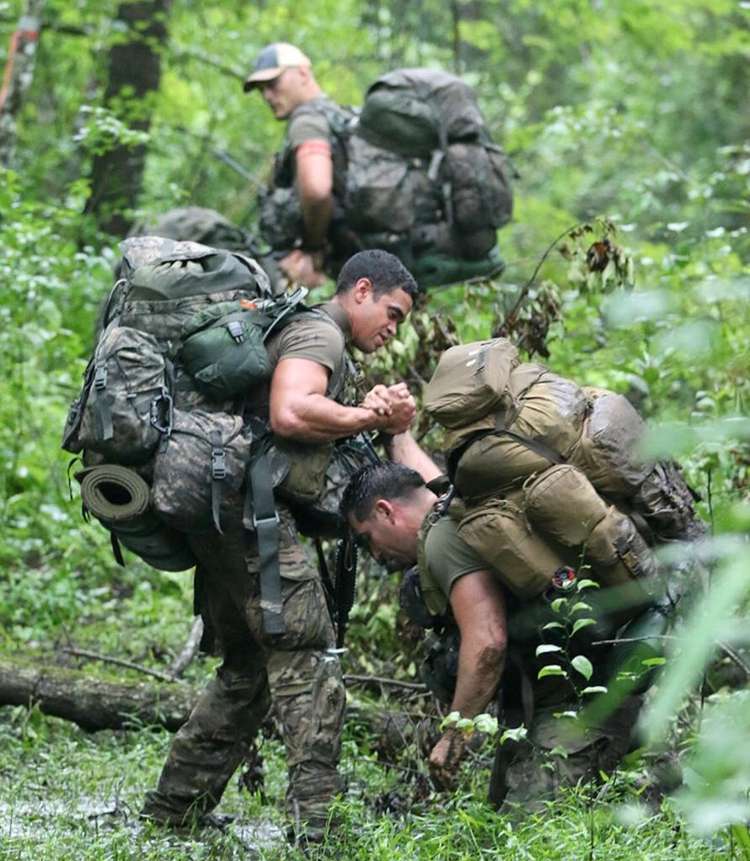The origin of ALICE
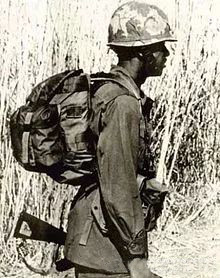
ALICE stands for All-Purpose Lightweight Individual Carrying Equipment.
On January 17, 1973, the US Army Standard A adopted the ALICE (Multipurpose Lightweight Individual Carrying Equipment) load-bearing system to replace the M-1956 Carrying Equipment (LCE) and the M-1967 Modernized Load Carrying Equipment (MLCE). Although now superseded by the MOLLE, ALICE equipment remains in limited use with National Guard and training units of the U.S. Army, as well as Navy and Air Force ground forces.
The ALICE system retains the concepts of individual combat and presence payloads that were perfected in the mid-1950s during the development of the LCE. The most important aspect of the combat and survivability load concept is that infantrymen can only carry what is necessary to complete the immediate mission. Since mission type, terrain, and environmental conditions affect clothing and personal equipment requirements, unit commanders may provide necessary items to infantry riflemen. The main purpose of the combat and presence load concept is to reduce the burden on the infantry
AlICE Common Components
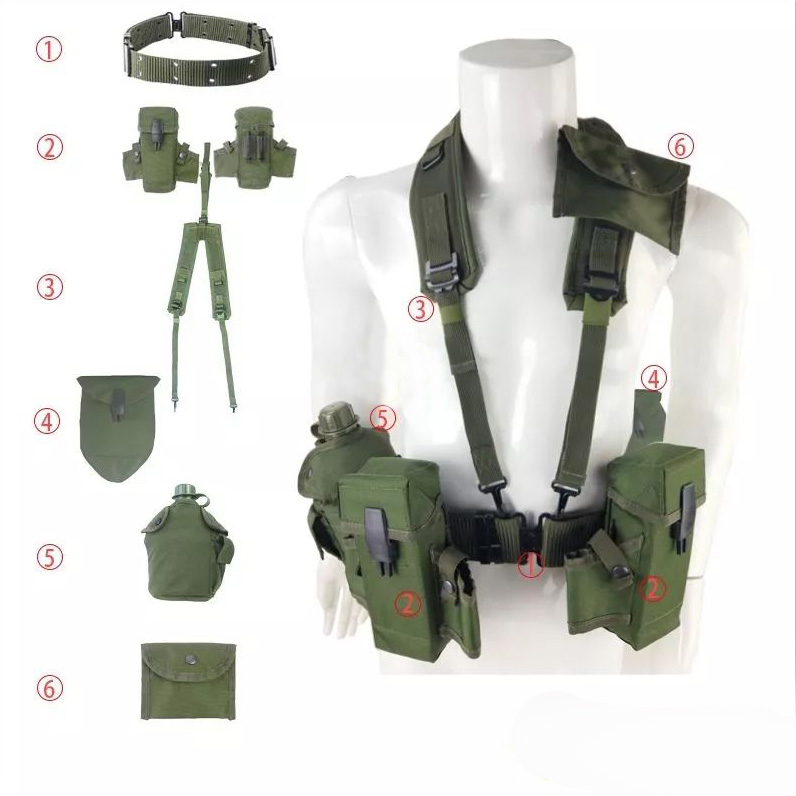
The ALICE system consists of components for combat payloads and additional components for presence payloads. These parts can be used in all environments - tropical, temperate, cold regions and even in the cold and dry arctic.
The combat payload of the ALICE system includes the following components:
1. Individual carrying belt LC-1 (NSN 8465-00-001-6487 series)
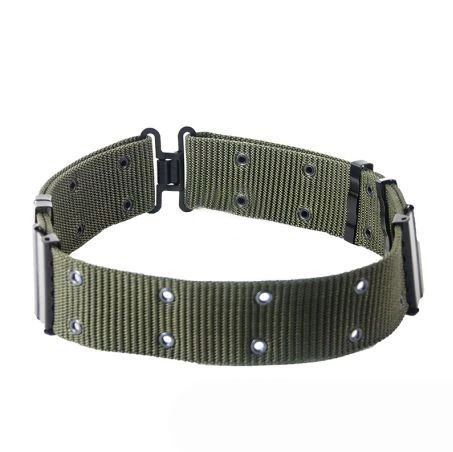
The man carrying belt is constructed of military grade olive nylon webbing with black chemical adjustment buckle, keeper and belt buckle. Medium waist belt (NSN 8465-00-001-6488) for waists smaller than 30 inches (76 cm) and large waists (NSN 8465-00-001-6487) for waists 30 inches (76 cm) or larger. Individual device straps adjust from both ends with clip-on buckles that slide over each device strap when open. Individual devices are connected by interlocking strap retainers, or hook eyelets along the bottom of individual device straps. Eyelets along the top of the individual equipment straps are used to attach individual equipment strap straps.
In 1981, the new belt LC-2 was equipped with a green plastic quick release buckle, assigned NSN 8465-01-120-0674 (medium) and 8465-01-120-0675 (large).
2. Small Magazine Pouch, LC-1 (NSN 8465-00-001-6482)
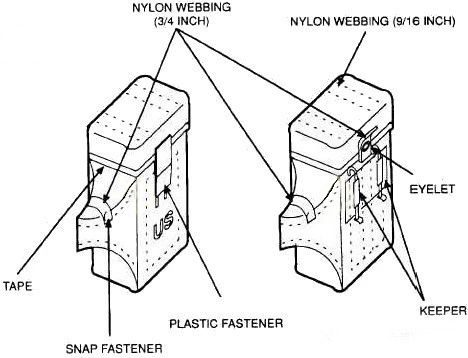
The small magazine pouch is designed to hold three 30-round magazines, cartridges (NSN 1005-00-921-5004) for use with the rifle, 5.56mm, M16A1. It is constructed of nylon duck and webbing with polyester sheet reinforcements on the front, rear and lid of the small arms ammunition box. Each cassette case is held in place by a 3/4" (1.9 cm) wide webbing spacer threaded through the top of the small arms ammo case. The lid closes with a plastic latch. Grenade carrying pockets are located on both sides of the small arms ammunition box, secured by nylon mesh straps and metal snap buttons. Tabs with metal eyelets are located on top of the small arms ammunition box to which the individual equipment is attached with straps. Small magazine pouches attach to individual equipment straps via strap holders with interlocking slides.
3. Y-belt, LC-1 (NSN 8465-00-001-6471)
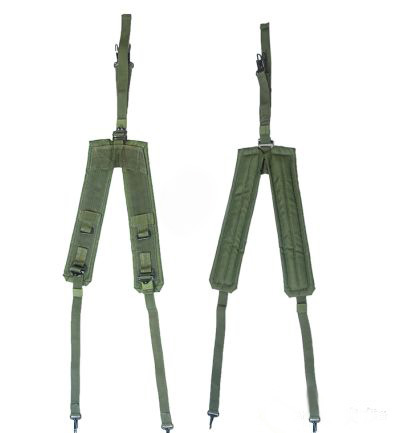
Y-belt, separate equipment belt - The separate equipment belt sling Y has three adjustment straps, but has four attachment points for the individual equipment belt and the small arms ammo box. The shoulder straps are padded with spacers. Each strap has a web loop and a non-slip buckle on each strap on the front and another on the back where the adjustment straps pass through the straps. There is a rectangular wire loop between the mesh ring and the clasp on the front of the strap. The 1" (2.5cm) wide adjustment strap has side snaps on one end. The rear adjustment strap has an inverted V shape with side snaps at each end. Each adjustment strap has a loop around it and is made of 1" (2.5 cm) elastic. In 1991, the separate equipment belt harness was redesignated LC-2 with no significant modifications.
4. Shovel Cover LC-1 (NSN 8465-00-001-6474)

The trenching tool holder is molded from EVA and the top fender is secured with two metal snaps. It attaches to a single equipment belt via two belt retainers with interlocking slides. The Digging Tool Carrier is designed to hold a lightweight collapsible trenching tool, handle (NSN 5120-00-878-5932).
5. Kettle Cover LC-1 (NSN 8465-00-860-0256)
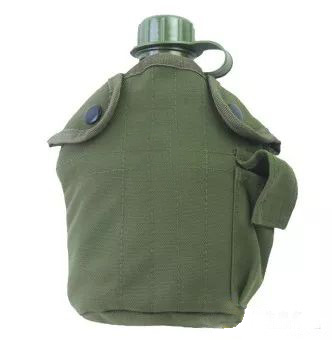
Water bottle cover is made of nylon cloth and webbing with acrylic fleece backing material. The double flap closure is secured with a metal snap. There is a small pocket on the front of the lid for carrying water purification tablets. The lid of this small pocket is secured with hooks and stacked zip ties. The cover attaches to each equipment belt via two belt retainers with interlocking sliders. Kettle lid designed to hold canteen water (NSN 8465-00-889-3477). In 1975, due to some minor design changes, the LC-1 designation of the kettle lid was changed to LC-2.
6. First aid kit LC-1 (NSN 8465-00-935-6814)
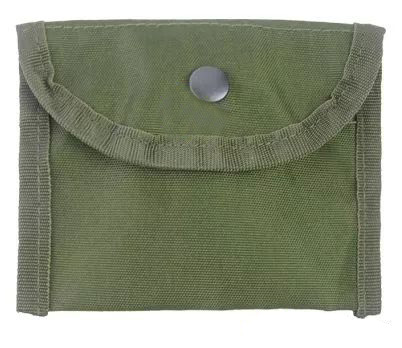
First Aid Kit Made of Military 106 Olive Green Water Repellent Treated 7.25 oz (206 g) Nylon. It measures 8 1/2" (22cm) long with the flap open approximately 4 1/2" (11cm) wide and creates a 4" (10cm) deep pocket. It has a metal snap-on fastener closure and attaches to a separate device strap or a single device strap sling with a strap buckle. The Field First Aid Kit is designed to accommodate Dressing, First Aid, Field (NSN 6510-00-159-4883) or Compass, Magnetic, Unmounted (NSN6605-00-151-5337).
7. Cargo support belt
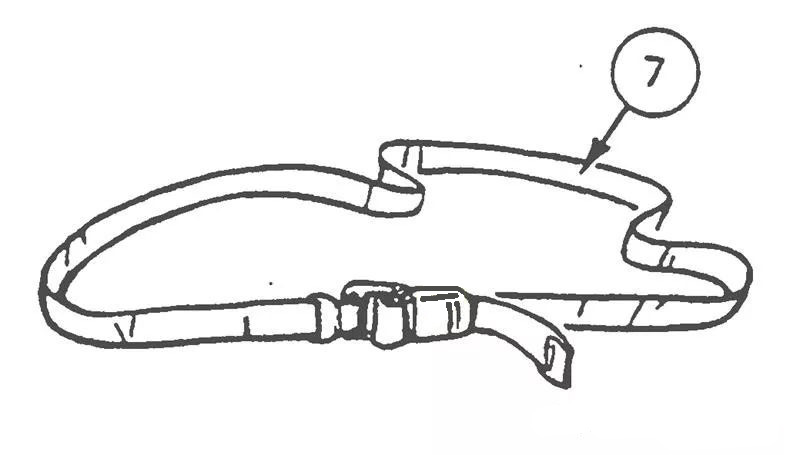
8. LC-1 Alice Main Case (Medium)
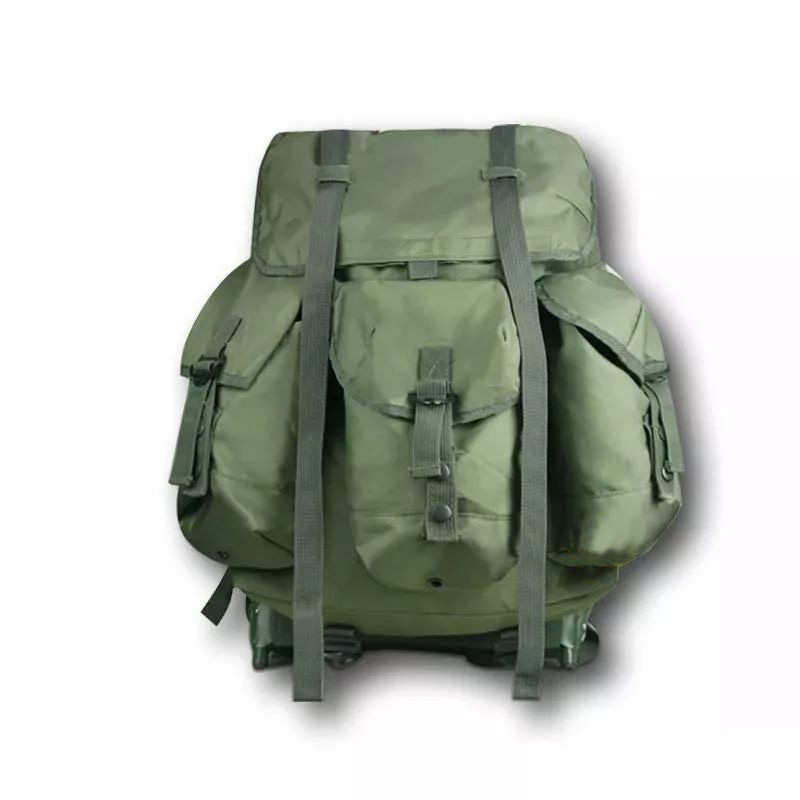
Main Bag (Size Medium) - Made of water repellent treated nylon with webbing, spacer fabric and metal hardware. It can be used with or without the LC-1 frame. The main compartment closes with a drawstring secured by a plastic clip. A radio pocket is located on the inside back. It can be secured to the inside bottom of the pack with three drawstrings, and three metal D-rings sit just below the inside radio pocket, reducing the size of the pack. Three pockets on the outside with adjustable buckles and buckles and snap buttons for quick access for miscellaneous items. Top flap has one pocket with hook and zip tape closure. Equipment hangers are located above each outer pocket and are located on each side. Drain holes in bottom of main compartment and outside pockets. An envelope pocket is located at the top of the back of the pack and is padded with the field wrap frame into which the field wrap frame is inserted when the field wrap is used for the field wrap frame. Buckles and straps on each side near the bottom are used to secure the field pack to the field assembly frame. The two rectangular wire loops on the top back of the field set and the D-rings on each side of the bottom of the field set are used to provide shoulder strap connections when there is no field assembled frame. Waterproof pockets are provided for the main compartment and each of the three outer pockets to keep equipment dry.
9. LC-1 Alice Master Case (Large)
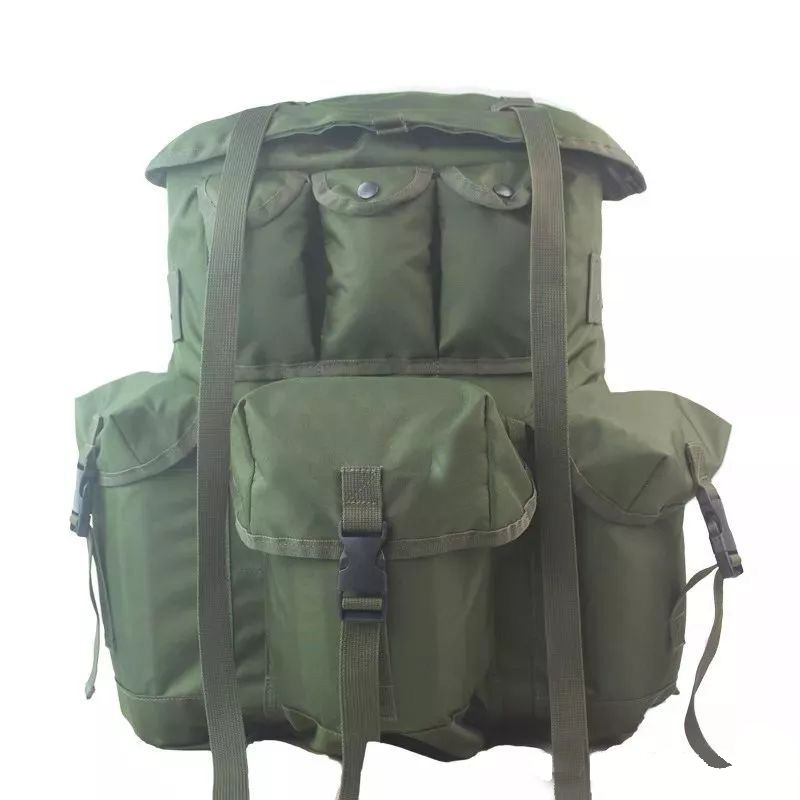
Main Bag (Large) - The Large Main Bag is similar in construction and materials to the Medium Main Bag, except that it is larger in size; the center outside pocket is larger than the other two main outside pockets; and is above the larger pocket Add three small outer pockets. Large field packs must be used with the LC-1 field pack frame.
10. Outer pocket
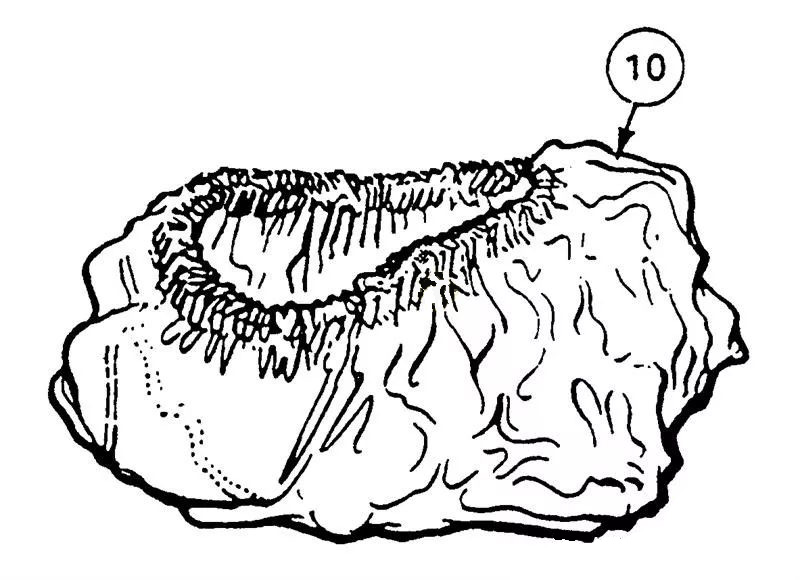
The Field Cover is intended to be used on the Medium and Large Alice main bags to provide camouflage.
Thanks for reading.
 CN
CN  US
US  DE
DE  JP
JP  RU
RU 